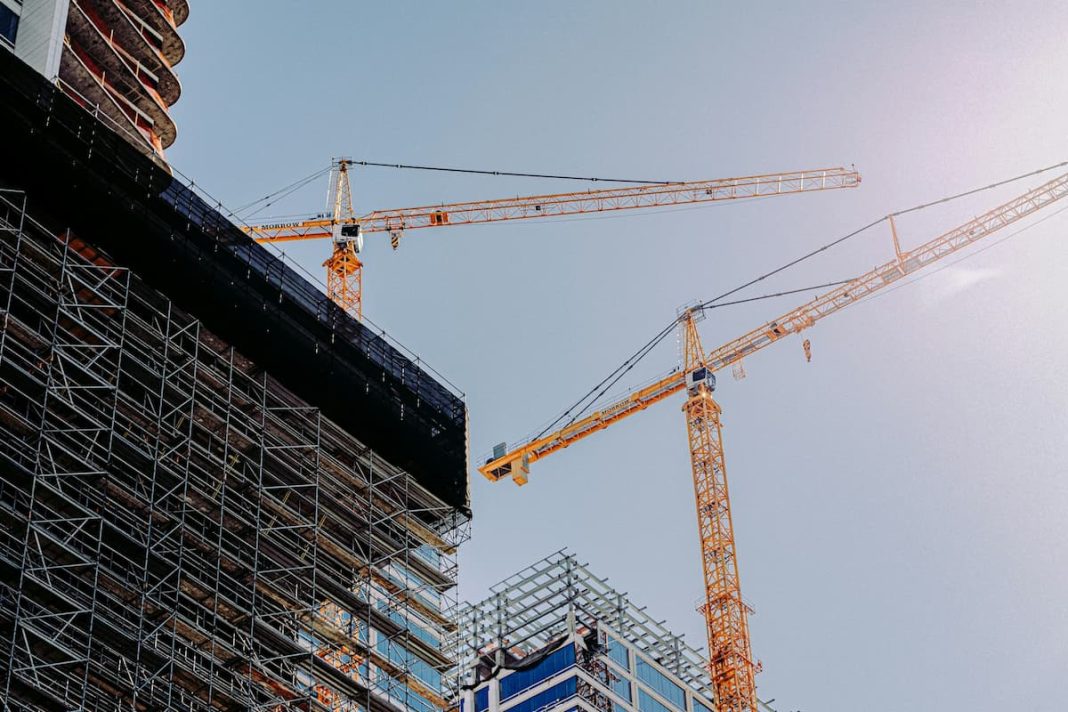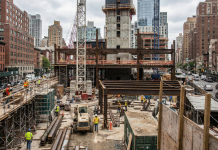In today’s construction US news, learn about last Thursday, when U.S. District Judge Kathleen Williams issued an order to halt reconstruction for two weeks as witnesses continued to testify in a hearing to decide whether to stop construction until the case’s final settlement. Meanwhile, the $130 million Interstate 264 and U.S. 42 junction renovation project is well under way, and Kentucky transportation officials are seeking to mitigate the traffic impacts that would affect surrounding schools, residences, and vehicles. Lastly, the Associated Builders and Contractors (ABC) evaluated fresh data from the U.S. Bureau of Labor Statistics that showed contractors had 246,000 open positions to fill at the end of June.
Judge to Consider Stopping ‘Alligator Alcatraz’ Construction Due to Concerns
Original Source: Judge to hear arguments on halting ‘Alligator Alcatraz’ construction over concerns
A federal court will hear closing arguments in a hearing on whether to stop construction at “Alligator Alcatraz” in the Florida Everglades indefinitely because to environmental concerns.
A federal judge will hear final arguments Wednesday on whether to stop construction at “Alligator Alcatraz” in the Florida Everglades indefinitely due to environmental concerns.
U.S. District Judge Kathleen Williams halted new work for two weeks last Thursday as witnesses testified in a hearing to decide whether to stop development until the matter is resolved.
The temporary injunction does not impede law enforcement or immigration enforcement at the institution, which holds hundreds of detainees. The center, built in two months near a sparsely utilized, single-runway training airport, can hold up to 3,000 inmates in tents.
The order prohibited installing new industrial-style lighting, paving, filling, digging, fencing, or building new structures, tents, dormitories, or other residential or administrative facilities.
Environmental groups and the Miccosukee Tribe want Williams to issue a preliminary injunction to stop operations and construction, which they say would destroy protected wetlands and reverse billions of dollars in environmental restoration.
Plaintiffs presented witnesses Wednesday and Thursday who claimed that the facility violates the National Environmental Policy Act, which requires federal agencies to review significant building projects’ environmental impacts.
Attorneys for the state and federal governments say the detention center would contain federal detainees, but Florida would build and operate it, therefore the federal environmental study wouldn’t apply.
Last week, the judge stated the holding facility constituted a state-federal cooperation.
The Florida Division of Emergency Management has added at least 20 acres (8 hectares) of asphalt to the site since construction began, according to environmental group witnesses. Additional pavement might increase water flow to nearby wetlands, transport dangerous chemicals into the Everglades, and limit Florida panther habitat.
Tuesday, Miccosukee Tribe water resource director Amy Castaneda testified that detention center fertilizer runoff could affect tribe vegetation. That could kill fish and prevent humans and wildlife from traveling, she said.
Marcel Bozas, Miccosukee Tribe fish and wildlife director, said tribe members hunt and fish for subsistence and culture. Continuing human activity can drive away game animals like whitetail deer and protected species like Florida panthers, wood storks, eastern black rails, and bonneted bats.
In testimony, Department of Highway Safety and Motor Vehicles executive director David Kerner said his 1,800 state troopers can hold undocumented migrants under a Homeland Security agreement. The Everglades facility was designed to relieve overcrowding at federal immigration detention centers and state and local facilities with agreements to hold federal immigration prisoners, he added.
The number of “Alligator Alcatraz” captives charged with violent crimes and whether other sites besides the midst of the Everglades were examined for detention cells were unknown by Kerner.
Last month, federal and state attorneys requested Williams to reject or transfer the injunction request, claiming the complaint was filed in the incorrect jurisdiction. Florida’s southern district is the wrong venue for the complaint because the detention center located in neighboring Collier County, in the state’s middle district, they contended.
Williams had not decided that argument.
A federal judge ordered the state additional time to make arguments against a class action certification of the civil rights litigation in a second legal challenge to “Alligator Alcatraz.”
In an Aug. 18 hearing, Miami U.S. District Judge Rodolfo Ruiz will solely address detainee lawyers’ preliminary injunction motion. He gave the state until Sept. 23 to reply to the detainee’s class action. The second lawsuit alleges detainees’ constitutional rights are violated because they cannot meet counsel, are kept without charges, and a federal immigration court has canceled bond hearings.
As the lawsuits were heard, DeSantis’ government was prepared to establish a second immigrant detention center at a north Florida National Guard training center. State records list at least one contract for the “North Detention Facility.”
Kentucky Crews Constructing US 42 and I-264 Are Minimizing Traffic Effects
Original Source: Efforts ongoing to minimize traffic impacts as Kentucky crews work on US 42, I-264
Kentucky Transportation officials are striving to reduce traffic impacts on drivers, neighborhoods, and schools as the $130 million Interstate 264 and U.S. 42 junction enhancement project is built.
According to a Kentucky Transportation Cabinet press release. Widening the Watterson Expressway (I-264) and rebuilding the U.S. 42 (Brownsboro Road) intersection will increase roadway capacity and safety.
The statement states that a half-mile segment of Brownsboro Road will be one-lane in each direction until January. To keep vehicles safe, state highway crews and contractors are adding lanes and giving on-site support.
“We’re doing everything we can to ease congestion for construction-affected drivers,” Chief District Engineer Matt Bullock stated in a news release. “This widening project is a major investment in the long-term future of this region, and we appreciate the community’s patience as we work to make travel safer and more efficient for the long-haul.”
According to the news release, the state is taking several steps to decrease work zone traffic impacts:
Increasing corridor traffic during peak times by adjusting traffic signals.
Use innovative radar-based vehicle detectors and live traffic flow monitoring at chosen signals to ensure vehicles “trip the light” and alter signals in real time to reduce vehicle wait times and increase traffic flow.
Expanding left-turn lanes at U.S. 42 (Brownsboro Road) and Rudy Lane to decrease congestion, delays, and bottlenecks during high-volume periods.
Traffic management by law enforcement at U.S. 42 (Brownsboro Road) and Rudy Lane.
Increasing pavement markings and corridor signage to indicate lane shifts, signal phases, and traffic pattern changes.
Maintaining a project website and traffic alert signups to notify everyone during the U.S. 42 interchange rebuild and associated construction activities over the next year.
U.S. 42 (Brownsboro Road) must be lane reduced to sustain traffic across the bridge over I-264 while it’s dismantled and rebuilt half at a time. Long-term improvements include safer travel, increased capacity, and reduced congestion.
The announcement expects the highway project to finish in fall 2027. As construction continues, timeframes and traffic consequences will be posted online. Motorists should sign up for weekly project traffic updates via email.
June Construction Job Openings Rise, but Hiring Remains Slow
Original Source: Construction Job Openings Rise in June, But Hiring Stays Sluggish
The U.S. Bureau of Labor Statistics, examined by the Associated Builders and Contractors, reported 246,000 available contractor positions at the end of June. That’s 14,000 more openings than in May, but 39,000 less than last year.
The share of unfilled construction jobs is low compared to recent years, and hiring is declining.
“Hiring in the first half of 2025 was the slowest since 2000,” claimed ABC Chief Economist Anirban Basu. Layoffs are historically low, but the data implies labor demand is decreasing, especially in the residential sector.”
Despite the slowdown, nonresidential construction jobs appear stable. ABC’s newest Construction Confidence Index found that only 14% of contractors plan to cut employment in the second half of the year.
Even while residential development is struggling, that optimism suggests ongoing commercial and industrial job growth. Contractors in those markets may still have recruiting opportunities in late 2025.
Summary of today’s construction news
In summary, at the time of the lawsuits, the DeSantis administration was reportedly getting ready to construct a second immigration detention facility at a Florida National Guard training facility in north Florida. At least one contract has been awarded for what state documents refer to as the “North Detention Facility.”
Meanwhile, to keep traffic moving across the U.S. 42 bridge over I-264 while it is being dismantled and rebuilt half at a time, the U.S. 42 (Brownsboro Road) lane decrease is required. Long-term benefits like safer travel, more capacity, and less traffic will arise from the finished project. The statement states that the interstate project should be finished by the fall of 2027.
Lastly, even though the economy is slowing down, jobs in nonresidential buildings look like they will stay stable. ABC’s most recent Construction Confidence Index shows that less than 14% of companies polled plan to lay off workers in the second half of the year. This optimism suggests that job growth will persist in the commercial and industrial sectors, despite ongoing challenges in the residential building sector. In those areas, contractors may still be able to find ways to grow their teams in the second half of 2025.








